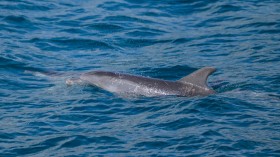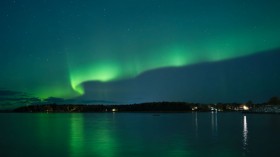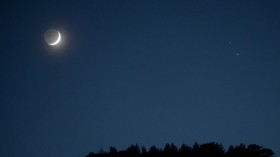Two years ago, an object the size of a small boulder slammed into the surface of Earth's moon with immense force, creating a flash of light nearly 10 times brighter than anything lunar impact ever recorded. Like many impacts before it, the collision changed the face of our moon forever, adding several new craters and altering old ones. Now NASA experts are working to distinguish the new from the old - identifying the Moon's freshest craters to help them better understand these kinds of impacts.
To pull this off, researchers are making use of NASA's Lunar Reconnaissance Orbiter (LRO) - a tiny spacecraft that is frequently imaging the surface of our solar system's most familiar natural satellite.
In the case of the latest face-changing event, which occurred March 17, 2013, the LRO's camera suite, called the LROC, was able to obtain observations before and after the impact. This allowed experts to then compare the actual size of the crater to the brightness of the flash - valuable information that could help assess distant impacts on similar lunar surfaces in the future. (Scroll to read on...)
Interestingly, despite the massive explosion the impact created, the crater itself turned out to be rather small, measuring 18.8 meters (61.7 feet) in diameter. Its influence range, however, is pretty immense, with notably-sized debris thrown by the collision found even hundreds of meters from where the crater was found. More than 200 related surface changes up to 30 kilometers (19 miles) away were noted, making the Moon's face radically different from how it once looked. (Scroll to read on...)
The results detailing the impact and crater were recently published in the journal Icarus.
Amazingly, the March 17 crater is but one of thousands of lunar surface changes that the LROC team is currently examining.
Mark Robinson, the LROC's principle investigator, explained in a recent NASA video that since the LRO started orbiting the Moon four years ago, it has identified an overwhelming number of before-and-after pictures where the Moon has seen a makeover.
"To sit down and look at every single pixel in all those images would probably take one person 10 or 20 or 30 years," he said.
Instead, the team developed a computer program to help them prioritize these assessments, looking for major impact craters like the very obvious March 17 event, first and foremost.
He added that the LRO was designed "to help NASA make really good decision about where to send robotic spacecraft and humans, and to address fundamentally important science questions not only about the moon, but about the solar system in general."
Assessments of lunar craters can help experts in the future determine where it's safest to set down spacecraft, and can also help them cut their teeth to do the same on other terrestrial surfaces.
[Credit: NASA Goddard]
For more great nature science stories and general news, please visit our sister site, Headlines and Global News (HNGN).
- follow Brian on Twitter @BS_ButNoBS
© 2024 NatureWorldNews.com All rights reserved. Do not reproduce without permission.





